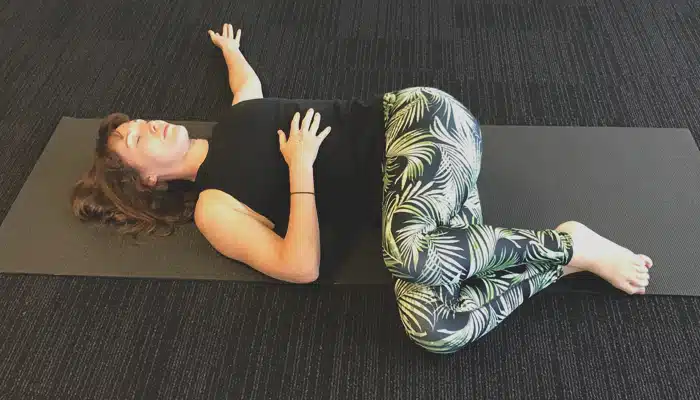Most people are familiar with measurements of heart functioning like our heart rate and blood pressure, but have you ever heard of Heart Rate Variability (HRV)? If you have ever come to a Physio Yoga class or Physio Restore workshop then that answer would be yes, as I am always talking about it! As a measure of autonomic nervous system flexibility, it is an indicator of how flexible and efficient we are at revving up to respond to a stressor, and then revving back down to recover from it. And when we talk about stressors, this could be a physical stressor, such as racing to catch a bus, or a mental stressor, like worrying about being late for an important meeting.

What is Heart Rate Variability?
HRV is a measure of the variation of the time interval in between each heart beat. It is a variation that arises naturally, as our heart beat is in fact constantly speeding up and slowing down, under the influence of our autonomic nervous system, and in rhythm with our inhalation and exhalation.

When our HRV is high, it reflects greater resilience to stress and higher levels of physical and psychological wellbeing. Interestingly, it also supports social engagement, helping us feel a greater sense of openness and connection in our relationships. When our HRV is low, it reflects poorer resilience to stress, and lower levels of physical and psychological wellbeing. So what can cause low HRV? Chronic activation of our stress response, where we are constantly shifting our nervous system in the ‘rev up’ direction but not having adequate physiological recovery from this stress, makes the nervous system more brittle, resulting in lower HRV. Conditions like chronic pain, IBS, depression and anxiety are all associated with low HRV, and understandably so, as our inner experience then becomes an internal stressor that is hard to escape from. Low HRV has also been associated with poorer future health outcomes such as immune dysfunction, inflammation, cardiovascular disease, dementia and mental health disorders.
So HRV sounds like something we should be paying attention to! The good news is, HRV is very trainable with a variety of simple lifestyle practices. And research is mounting that specific HRV training can be an effective component of symptom management for a large variety of physical and mental health conditions. Measuring HRV is also very accessible now with an explosion of smart phones and apps on the market to test and track this at home. For the curious, monitoring your HRV while trying different practices can help you understand what works best for you individually to boost nervous system regulation and support your overall health, for the present and the future.
What can I do to improve my HRV?
Various practices that involve movement, breathing and meditation have demonstrated the most positive effects on boosting HRV. Try them all or pick the one you enjoy the most to build into your weekly routine.

1. Smooth Slow Diaphragmatic Breathing
Smooth slow diaphragmatic breathing at around 5-6 breaths per minute (count 5-6 seconds inhale and 5-6 seconds for you exhale). This rate has been shown to be the most effective rhythm for bringing about balance in the nervous system and feelings of calm alertness. Try it on your own or download breath pacing apps such as Insight Timer or My Calm Beat to support your practice. My personal favourite is listening to the track “2 bells” by Coherence (available on Spotify and iTunes) which plays meditative bells at 6 second intervals, and is a regular on my Physio Yoga and Physio Restore playlists!
2. Mindfulness meditations
Mindfulness meditations that focus attention and allow the body to come into a state of calm have shown excellent effects on boosting HRV.
3. Intense Exercise with Conscious Recovery
Intense exercise with conscious recovery – after revving your system up in your exercise session, try resting in a relaxation pose, mindfully stretch, and smoothing and slowing your breath. Using practices to actively bring your heart rate and breathing rate down will entrain autonomic flexibility and higher levels of HRV.
4. Yoga
Yoga – combining physical exercise to lift and lower the heart rate, breath regulation practices, mindful attention and conscious relaxation, yoga is one of the best practices to improve HRV.
How can I measure my HRV?
Measuring and tracking HRV has never been easier with a variety of smart phone apps available that utilise either your phone’s rear camera or a heart rate monitor chest strap that will send information to your phone. My top picks are Elite HRV and Welltory, which give interesting feedback options to help you create healthy daily routines to promote higher heart rate variability.
Come train with us!
Interested in exploring the impact of exercise, yoga, paced breathing and mindfulness meditation on your nervous system and how this effects your symptom management and overall health and wellbeing? Make sure to join us for a Physio Exercise Class or Physio Yoga class, or Physio Restore Workshop. Let us know if you are tracking your HRV during the session as we would love to hear about your results!
This article was brought to you by:

